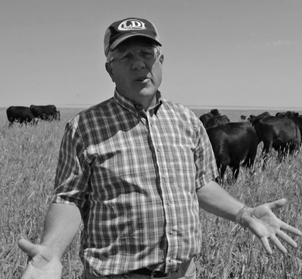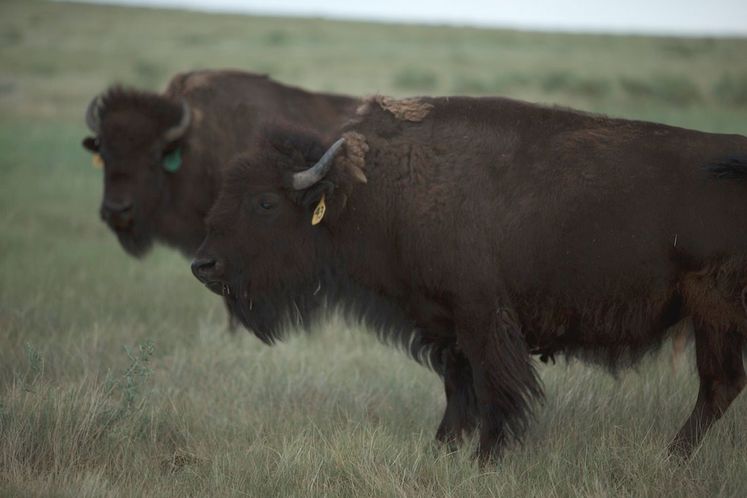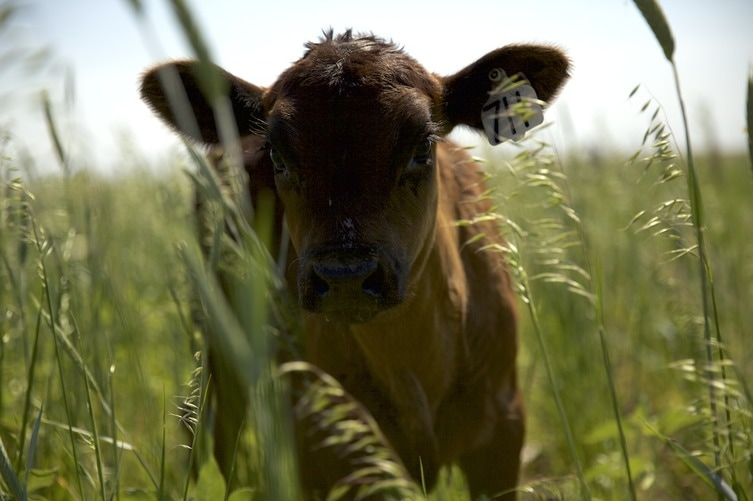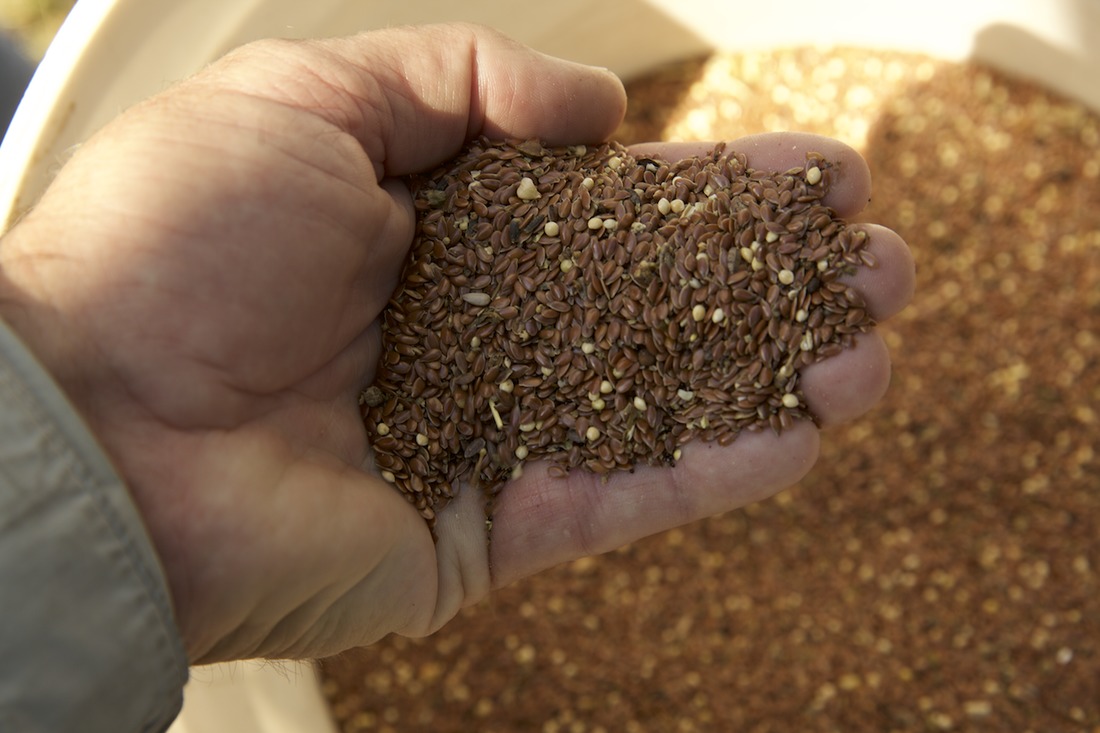 Curt is a fourth generation farmer. He left farming in 1973, and graduated from the Florida Institute of Technology with a Bachelor's Degree in Ocean Engineering. He worked in research and development in the oil industry in Houston for a few years before growing tired of city life, and leaving to buy a farm with his brothers in eastern Colorado in 1987. Over time, his brothers left farming so Curt took over the operation of the farm. He has been continuously cropped and no-till since 1995. The following interview has been edited for clarity and length. Steve Rosenzweig: How has the ecology of the shortgrass prairie influenced the way you graze cattle? Curt Sayles: My understanding is that the large bison herds would come through here about once every 3 years, and they kept moving all the time, so it was a way different grazing then we do now. What we're trying to do here with our cover crop – grazing cover crop – is we like to take about a 1/3 of the plant biomass and leave 2/3, and keep the cattle moving through. In some way that is duplicating the way the natural herds used to graze this part of the world. SR: What was your motivation for integrating forages and cattle into your cropping system? CS: The way we came to grow forages and cattle is nothing that we invented. You know we were following the lead of some of the researchers and stuff in soil health that's going on in the United States right now. Dwayne Beck for example... they're all telling us that to get the biology you have to have diversity aboveground if you want diversity belowground. So we have crop diversity but the component that we've been missing is the livestock. We were diversified in our crop rotation, then we were diversified with cover crops but now livestock is a whole other level of diversity that we've brought into it. And I think it is a necessary piece for the system to work. With our no-till we had increased, but plateaued our organic matter. I think cover crops would move us up again, but we would reach another plateau. I think ultimately with the livestock, as we move back toward the way nature wanted it to be, I think livestock are going to push us up to yet another plateau. SR: What other benefits do livestock bring to your operation? CS: I've always thought in this part of the world, with our radical changes in the environment – rainfall and such – you could end up with failed crops. And it was always the guys that had cattle, you know they could always graze or feed the cattle. And so I think what it does it gives you another income stream. One of the criticisms of cover crops is that it's a black hole just like fallow period is. Well the beauty of grazing is we get the benefit of the cover crop and we get an income because the cattle are utilizing the cover crop. We're creating pounds of cattle so it actually, it gives us economic resilience as well as soil resilience. SR: What does your forage mix consist of? CS: So this is actually the third planting that we've had and so we started out the earlier plantings had cool season forage grasses and they're still in here I think. But we moved away from the barley so much but you can see this would be triticale, this is oats. We put flax in for diversity. We put sunflower in for diversity. And then I think am I seeing a turnip or a radish? Here's some vetch in here. Oh here's some peas right here. So we've got 5 or 6 components in this cocktail. So what we're trying to do, we're not expecting the cattle to graze the flax or the sunflowers but they add diversity. SR: What do you gain from having diversity? CS: Well, what you’ll find if you go back east with the corn on corn or soybean on soybean system – when you have a monoculture system, it allows weeds and insects to get into it. When you have diversity, like in our cropping system, then we keep the weeds off balance and we keep the bugs off balance. Now what we're seeing here is a little bit different because this is almost companion cropping. Some plants make nitrogen available and some plants make phosphorus available and some plants are better at pulling moisture up from deeper depths. I used to think that these plants would compete but we're finding now that they actually work in conjunction with each other. They help each other. And so that diversity helps them all survive better as group than the individuals would. SR: You’ve eliminated fallow in your cropping system, which not a lot of other farmers around here are willing to do. How would you convince them that it works?
CS: We all have our biases, and if you've been doing the same thing for 60 years, it's hard to change. But the guys that were having serious economic issues and soil health issues, they are the ones that are now adopting cover crops and stuff. Their minds were open enough to alternatives. If they’re buying expensive land or paying high cash leases, it’s hard to survive doing it the old ways. They've got to do it different. And then they come to understand that with the fallow period, they were wasting 50-60% of the moisture that falls on the ground. So then if they understand that you make the argument, “well then why don't we have something grow in there be it a cash crop or a forage crop? Let's use that moisture when it falls on the ground.” And that's the chain of events I think. We are continuous crop, no-till and haven't gone broke. So maybe that's another sign that what we're doing is working. SR: What is your vision for your operation? CS: I'd love to be the Gabe Brown of Eastern Colorado. I'd love to have his yields and no chemicals and no fertilizers. That would be perfect. I have nothing against chemicals and fertilizers. We are in very depleted soils, so it may not be achievable, but that's the goal that I would love to shoot for. And we would love to move away from GMO corn, but we can't because we don't have our soils ready to do that yet. Cereal rye looks like a tool that's pushing us toward that end. But our philosophy is that we want to keep a growing crop every year. Steve Rosenzweig is a PhD Candidate at Colorado State University. This interview was conducted as part of a film project to document emerging innovations in dryland agriculture, which can be viewed here.
1 Comment
3/11/2021 08:12:46 am
Hi Curt,
Reply
Leave a Reply. |
Details
AuthorsThis blog is maintained by researchers at Colorado State University Archives
February 2018
Categories |



 RSS Feed
RSS Feed
